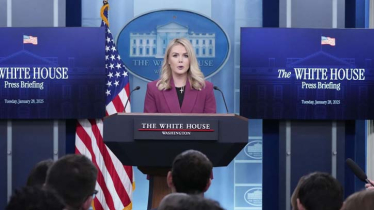
Photo : Collected
For years, renewable projects in India have been growing steadily, from small-town rooftop solar installations to large-scale projects across the desert and long stretches of wind turbines and solar panels on farmland all contributing to the country's climate goal of transitioning to clean energy.
But a mix of policy decisions, politics and supply chain issues meant solar projects in 2023 have been marred in delays and uncertainty, making the country fall short of its annual clean energy installation target in a year that saw heat records topple and devastating floods batter the country. Experts say this is a significant dent in the country's ambitions, but some are confident that the shortfall can be made up this year.
A report by the Institute for Energy Economics and Financial Analysis found that the country only installed 13.7 gigawatts of clean energy last year, like wind, solar and nuclear, compared to 16.3 gigawatts in 2022. India needs to install 40 gigawatts a year to meet its goal of installing 500 gigawatts of clean energy — enough to power 51 million homes in the country — by the end of the decade.
The shortfall “means that meeting the 2030 target for clean energy is highly challenging,” said Charith Konda, part of the team that put together the IEEFA’s analysis.
Solar module prices have dropped substantially worldwide in recent years, but recently in India, they have been subject to conflicting import tax policies, with the government first ordering high import taxes and then backtracking within the space of a year. This created a “wait and watch” attitude among solar project developers, said Vinay Pabba, chief operating officer of Hyderabad-based renewables company Vibrant Energy.
Numerous projects, both big and small and across different states, have been hit with monthslong delays because of solar project developers holding off making new orders, said Gurpreet Singh Walia, a consultant for renewable energy projects in India.
Konda said that incentives to encourage domestic manufacturing of solar modules, rather than importing them from abroad, conflicted with the country’s goal of installing renewable energy at speed.
And since what was being domestically produced in India was preferred by countries like the United States for their own energy transition over Chinese manufacturers, a huge increase in exports of solar power parts from India meant there was less supply available for local projects, analysts say.
Experts also say fossil fuel lobbying in the country meant policies to encourage renewable growth have fallen short.
Between 2008 and 2022, India added the third-most solar power capacity of any country — behind only China and the United States — and the sixth-most wind power, according to the Global Energy Monitor. India did see a large dip in installations in 2020 because of the COVID-19 pandemic, but otherwise mostly saw an upward trend for new projects year-on-year. But also in those 15 years, the amount of coal capacity added in the country was well over double that of wind and solar, the Global Energy Monitor’s data shows.
People in positions of power and decision-makers do not believe that renewable energy can provide firm power” because they are not convinced that batteries can store enough renewable energy to make reliable and consistent electricity when the sun doesn't shine or the wind doesn't blow, said Alexander Hogeveen Rutter, an independent energy analyst based in New Delhi. "When it comes to getting real power, coal is still considered the best option in India.
That view means the country, the third largest emitter of greenhouse gases, is still installing new coal every year as electricity demand surges because of development and population growth. More than 75% of India’s electricity is made from coal-burning, but it plans to have 50% of its growing electricity needs from renewable sources by the end of the decade.
But some analysts believe that most of these issues have now been ironed out and that India can make up for the shortfall of new projects this year.
There was a sharp rise in solar modular imports toward the end of last year, suggesting that a lot of the delayed projects will soon be completed, said Vinay Rustagi who tracks and analyzes the clean power sector for the financial research firm Crisil.
Messenger/Disha








